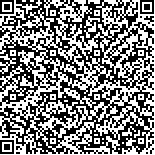|
| 引用本文: | 孙栋,牛翠娟.单巢类轮虫有性生殖的研究进展与展望.湖泊科学,2013,25(2):171-187. DOI:10.18307/2013.0202 |
| SUN Dong,NIU Cuijuan.Sexual reproduction in monogonont rotifers: A review. J. Lake Sci.2013,25(2):171-187. DOI:10.18307/2013.0202 |
|
| |
|
|
| 本文已被:浏览 10218次 下载 6187次 |

码上扫一扫! |
|
|
| 单巢类轮虫有性生殖的研究进展与展望 |
|
孙栋, 牛翠娟
|
|
北京师范大学生命科学学院生物多样性与生态工程教育部重点实验室, 北京 100875
|
|
| 摘要: |
| 作为轮虫动物门的主体,单巢类轮虫是淡水浮游动物的重要组成部分.它们通常作为一类主要的初级消费者在淡水生态系统中起着重要作用,因而深入了解它们在自然水体中的种群动态及其决定机制对淡水生态系统理论与应用研究都有重要意义.作为一类具有典型周期性孤雌生殖生活史的动物,有性生殖的发生和进化策略对其种群动态和进化都有重要影响,因而单巢类轮虫有性生殖的机理和进化研究一直是轮虫学研究领域的一个核心内容.本文就当前单巢类轮虫有性生殖的主要研究进展,包括其发生机理、信息素、理论模型、影响因素和相关实证研究等进行了系统综述;特别就单巢类轮虫有性生殖策略的三个理论模型:"bang-bang"模型、中等有性生殖比率模型和非延迟的有性生殖模型进行了详细论述.此外,本文还对影响单巢类有性生殖的内外源因素进行了总结,主要的外源因素包括食物的浓度及种类、温度、盐度和特殊的细菌等,而主要的内源性因素则包括母体年龄、食物浓度诱导的跨代母系效应、延迟的有性生殖和其他一些潜在的母系效应因素等.其中,因为延迟的有性生殖现象广泛存在且可能是轮虫物种共存或克隆共存现象的一种潜在解释,所以就此现象的理论模型、机理和实证研究等方面进行了深入讨论.另外,本文还简要讨论性比率资源分配与单巢类轮虫有性生殖的关系.最后,对未来几个可能的热点方向简单评述,以期为国内轮虫学和相关方面的研究提供帮助. |
| 关键词: 浮游动物 单巢类轮虫 周期性孤雌生殖 有性生殖 种群动态 理论模型 性比率 有性生殖延迟 |
| DOI:10.18307/2013.0202 |
| 分类号: |
| 基金项目:国家自然科学基金项目(30970349)资助 |
|
| Sexual reproduction in monogonont rotifers: A review |
|
SUN Dong, NIU Cuijuan
|
|
Ministry of Education Key Laboratory for Biodiversity Science and Ecological Engineering, College of Life Sciences, Beijing Normal University, Beijing 100875, P.R.China
|
| Abstract: |
| This paper focuses on the recent findings of sexual reproduction in monogonont rotifers,which account for the main bulk of phylum Rotifera.Generally,they act as one of the major groups of primary consumers in freshwater ecosystem.Thus,studies on population dynamics and their mechanisms of monogonont rotifers may provide important data to both theoretical and applied research on freshwater ecosystems.As a group with parthenogenetic life history,sexual reproductive strategy in monogonont rotifers may profoundly affect their population dynamics and evolution.This review summarized several aspects of sexual reproduction in the monogonont rotifers,such as the mechanism,pheromones,models,influence factors,and particularly,empirical evidences.More specifically,we emphasized three models about their sexual reproduction patterns: "bang-bang"model,intermediate mictic ratios model and no-delaying mixis model.Then we summarized the exogenous and endogenous factors that affect sexual reproduction.The major exogenous factors include the concentration and type of food,temperature,salinity and special bacteria,while the major endogenous factors include the maternal age,a transgenerational maternal effect induced by food concentration,mixis delay and some potential maternal effects.We especially highlighted the model,mechanism and empirical evidences of mixis delay,since this phenomenon existed widely and was deem to be a potential explanation for species or clones coexistence.We also gave some personal views on the relationship between sex allocation theory and sexual reproduction in the monogonont rotifers.Finally,several potential hotspots in the future study were highlighted. |
| Key words: Zooplankton monogonont rotifers cyclical parthenogenesis sexual reproduction population dynamics models sex allocation mixis delay |
|
|
|
|